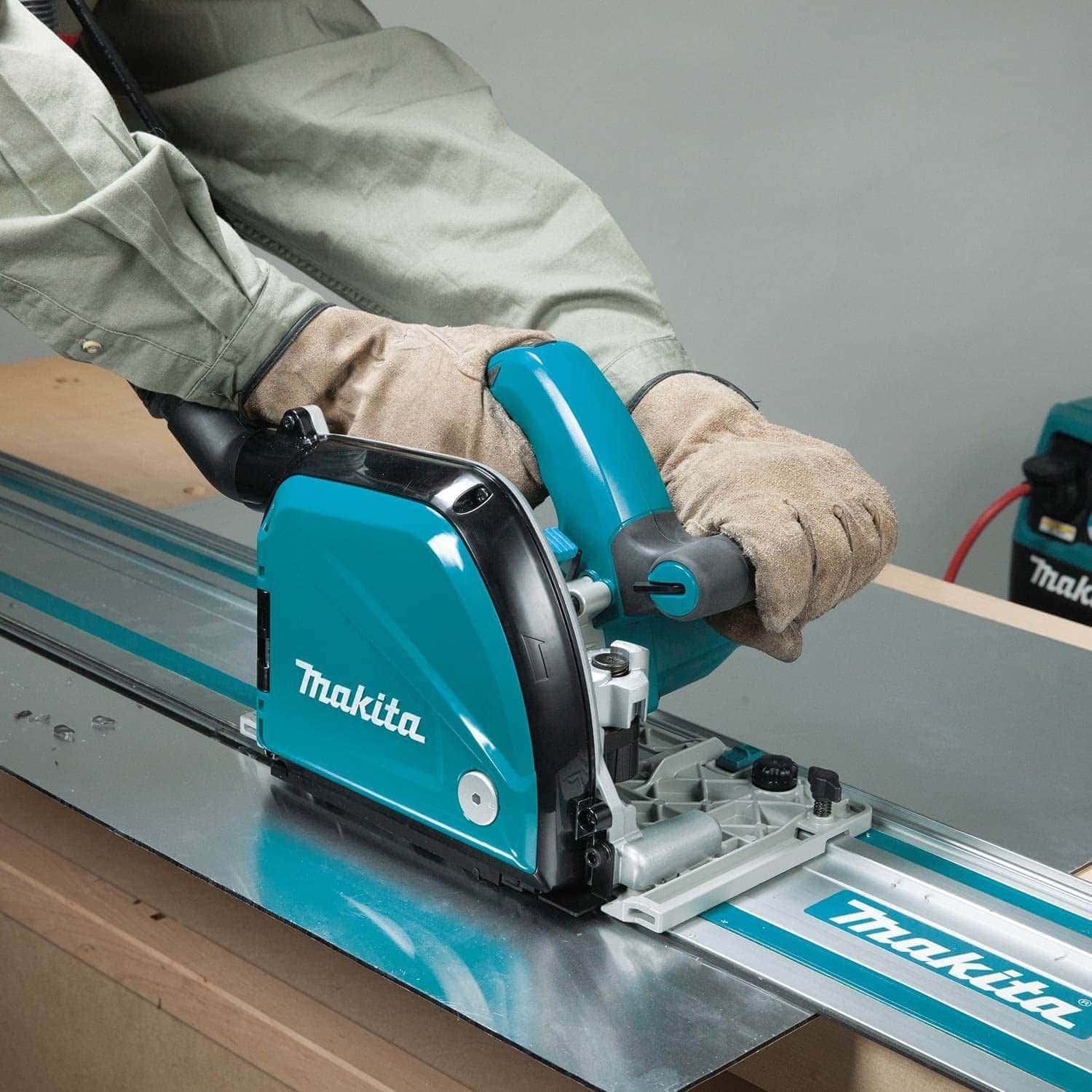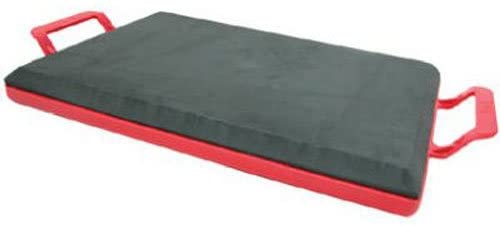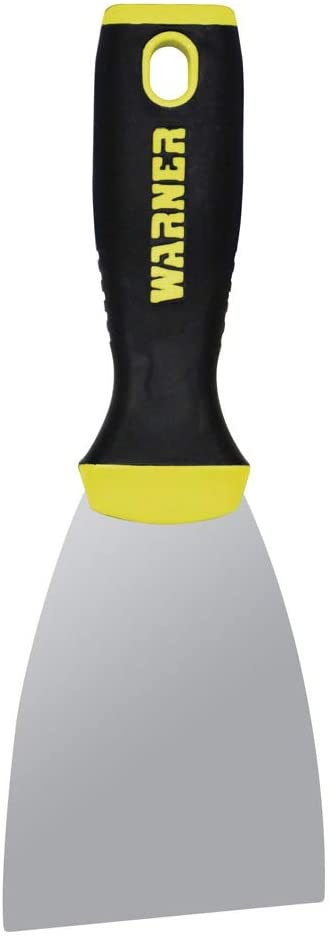The Essential Concrete Tools List: 30 Different Types & Their Uses
-

- Last updated:
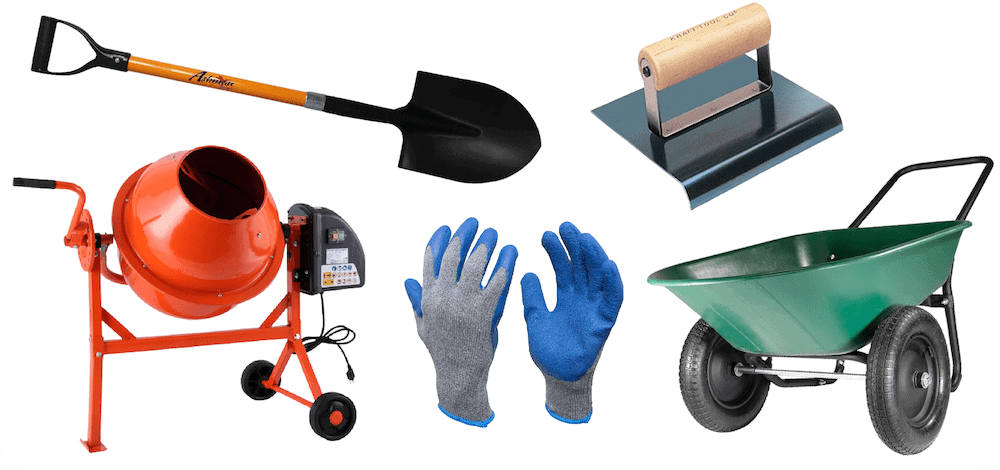

Having the right equipment for the job improves the quality of your work and productivity while making things easier. This is especially important when working with concrete because time is of the essence, and things can easily go wrong.
The good news is that most essential concrete tools are not pricey. Therefore, consider buying them instead of renting them. The following is a list of the 30 most essential concrete tools.
Top 30 Types of Essential Tools & Their Uses
1. Mixers
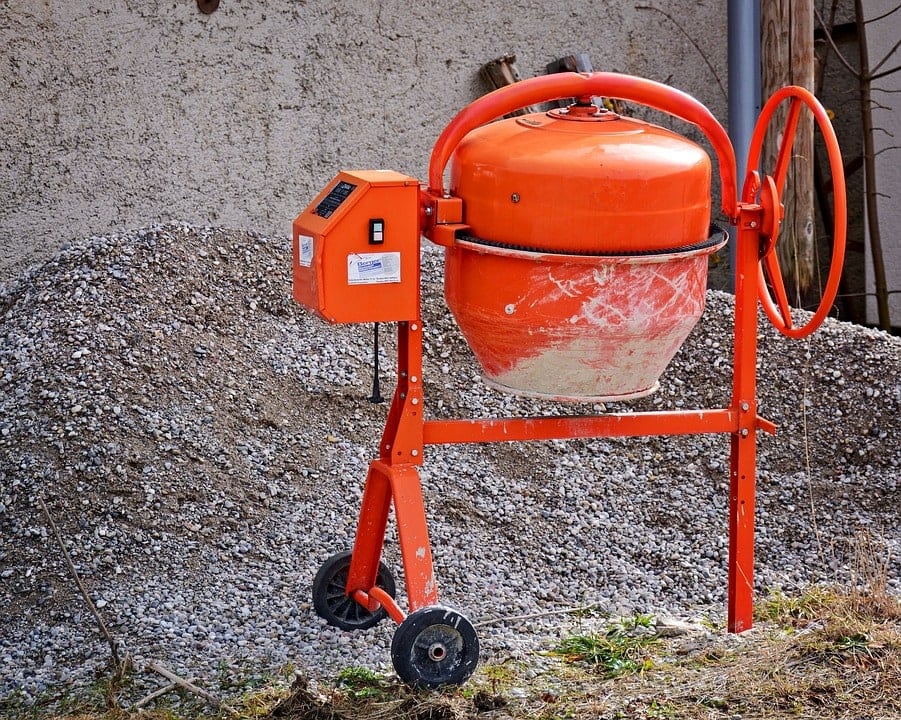
Concrete mixers are of two main types: the continuous mixer and the batch mixer. The continuous mixer is used in large-scale projects where large amounts of concrete are needed, such as in the construction of dams and bridges to provide a continuous flow of concrete.
The batch, on the other hand, is the most commonly utilized type of mixer. It consists of a revolving barrel with baffles or blades where predetermined amounts of materials are put for mixing.
2. Safety Gear
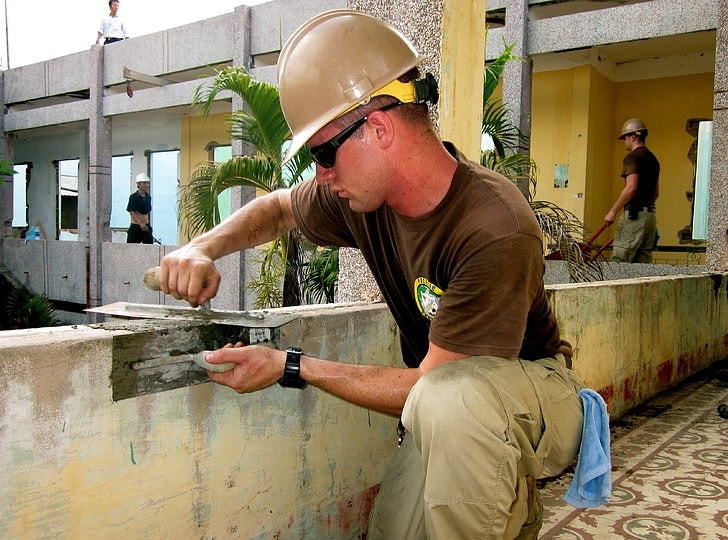
Concrete is hazardous because it contains chemicals that are irritants. As such, it is crucial that you wear protective gear when handling it. Some of this includes:
Essential Concrete Safety Gear
Goggles
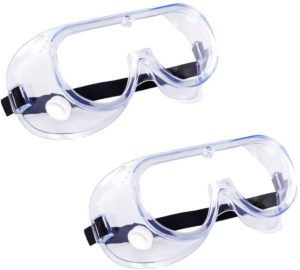
Ear protection
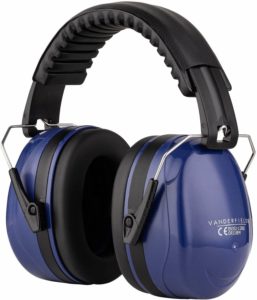
Mouth and Nose Protection
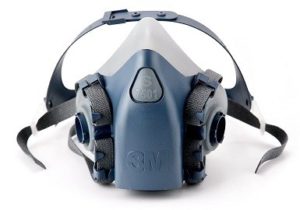
Heavy-duty Gloves
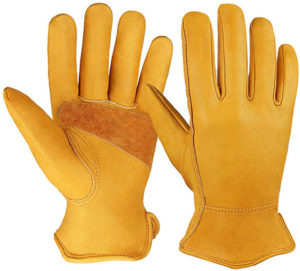
Rubber Boots

3. Screeds

These long, straight boards or stiff tubing are used to level concrete after it is poured. They come in different sizes and types to suit the requirements of a specific project. As a general rule, a hand screed should be longer than the width of the surface you are leveling to ensure you reach the edges effectively in one motion.
4. Wheelbarrows
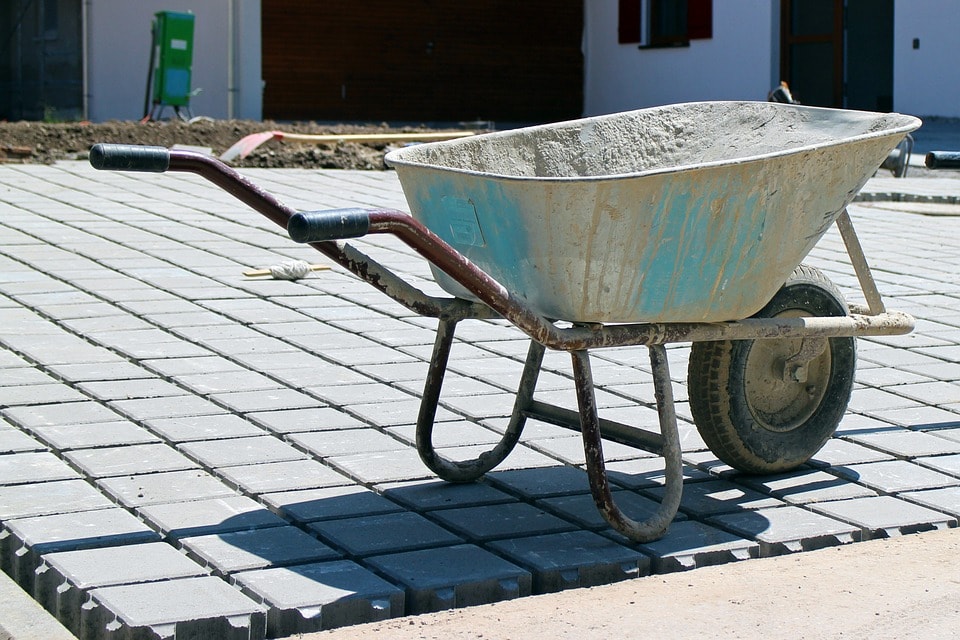
A wheelbarrow comes in handy when carrying tools or small amounts of concrete around the site. You can also use them to mix concrete when needed. When purchasing a wheelbarrow for concrete work, ensure that it has pneumatic tires since they are the best types of tires for supporting heavy loads. The body should be made from steel with at least an 8 cubic feet capacity.
5. Bucket

Using a bucket is the most effective way of pouring water for mixing concrete. Have one ready before you need it.
6. Laser Level

Laser levels are arguably the best tools for leveling forms. They also help you establish or check the height of installed pieces, such as bolts. Unlike traditional strings, laser levels utilize a beam of light for leveling. They are more accurate and consistent than other leveling tools.
7. Floats
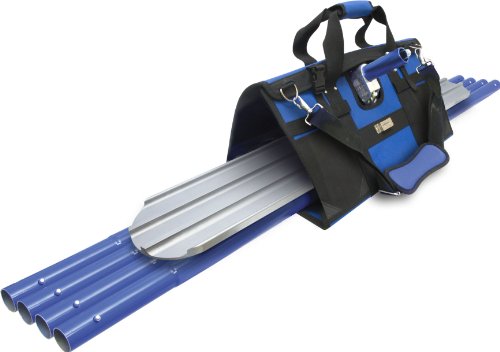
There are two types of float: bull floats and magnesium floats. Bull floats come with wide blades and a long handle and are usually used to perform the first leveling pass after screed work. Magnesium floats, on the other hand, are much smaller. They are typically used to level the edges of the slab.
8. Vapor Barriers

Also known as retarders, vapor barriers prevent moisture from escaping the surface of damp concrete and weakening it, and they are placed on top of the concrete. However, they can also be applied before the concrete is poured to prevent the dry base material from sucking water out of the concrete.
9. Groove cutters
Also referred to as groovers, these tools help you make control joints on residential slabs, walkways, and driveways. They come in handy where a concrete saw is not practical.
10. Hand Sprayer
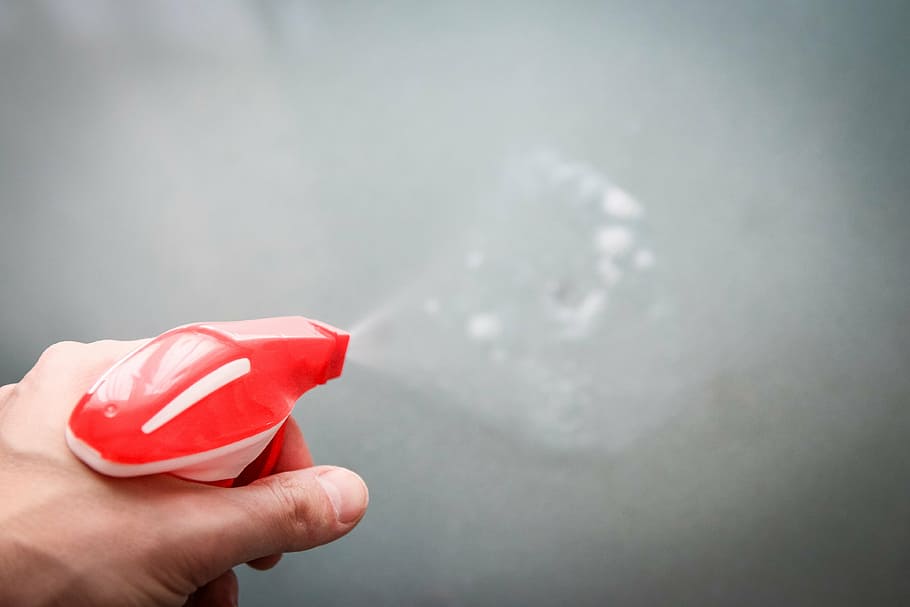
A hand sprayer allows you to apply curing compound directly onto a damp concrete surface to assist the concrete in setting at your preferred rate while preventing the development of cracks.
11. Saws
Depending on your project, you might need either or all of the following power saws:
Concrete Saws
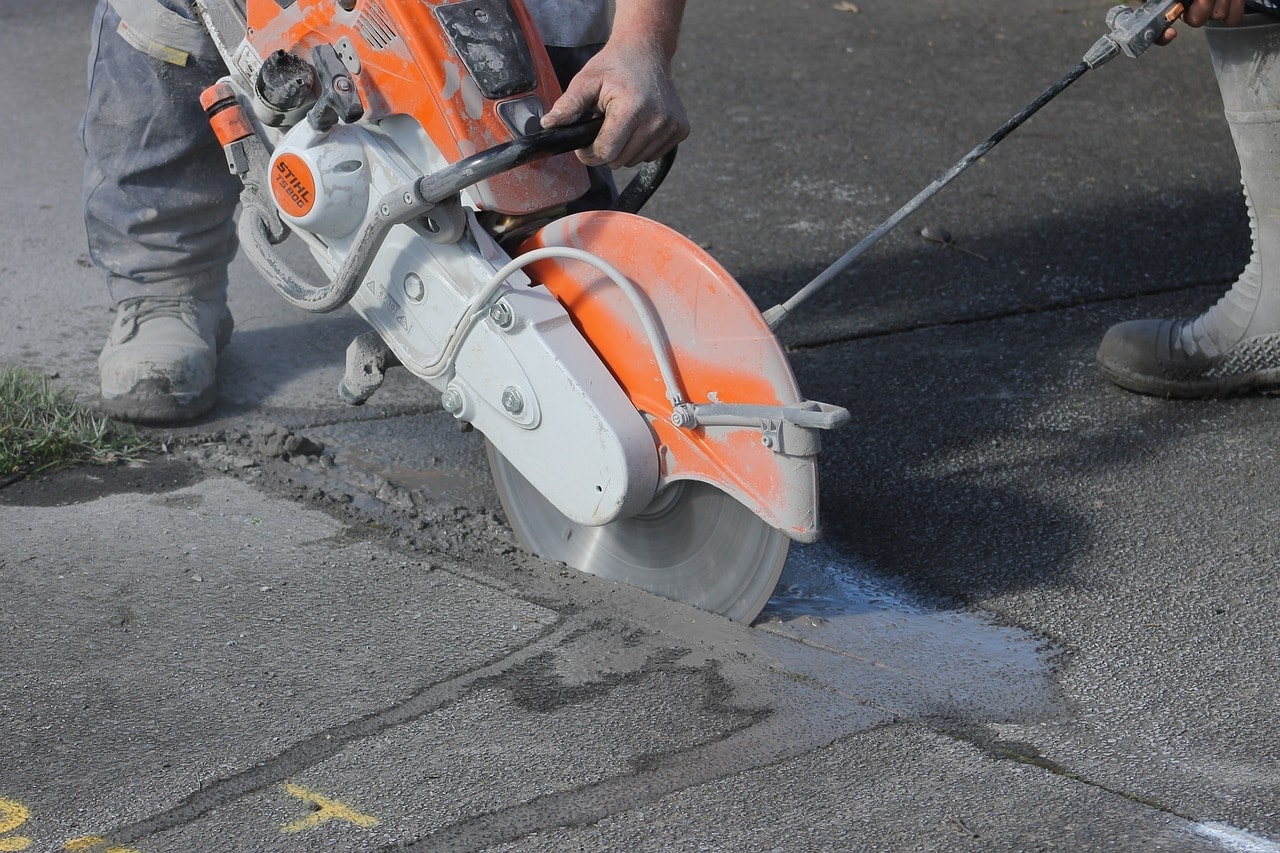
These saws come in handy during the demolition or removal of old concrete structures. You can also use them to cut control joints as the concrete hardens. The most essential component of a quality concrete saw is its blade. Diamond blades are the best, as they are tough and durable.
Standard Woodworking Saws
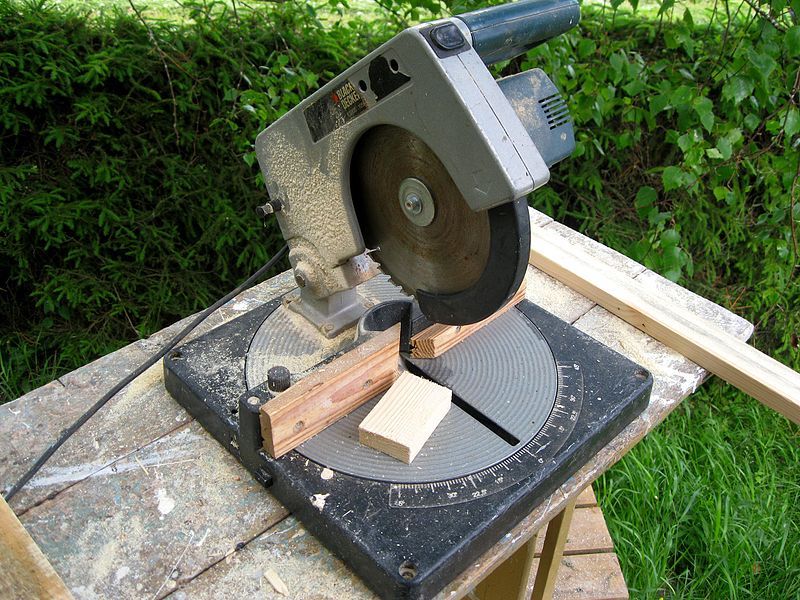
These are designed to cut wood forms. They include circular and miter saws.
Chop Saws
These saws can cut through anything, but chop saws do well with metal, which you’ll need to cut the rebar.
12. Plate Compactor
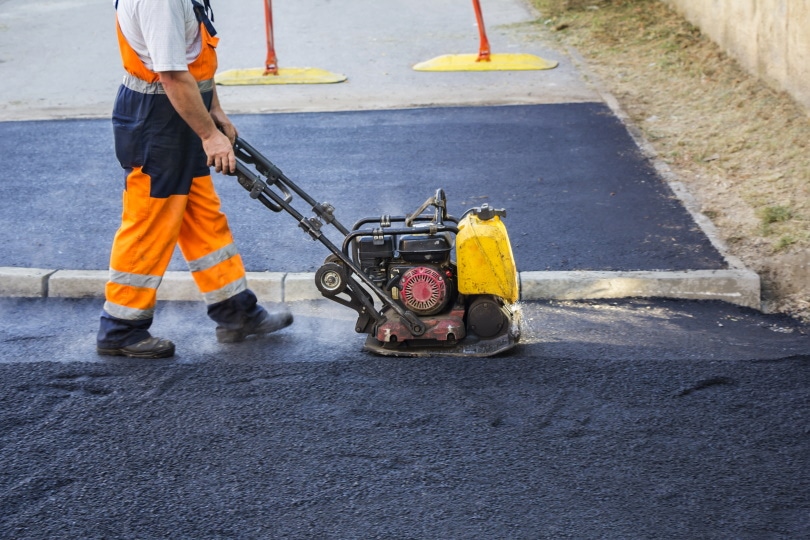
A compactor helps compact gravel and other granular surfaces to create a tightly packed, dense surface for your concrete slab to rest on. They are handy for unstable or uneven soil, where achieving a stable base is paramount before pouring concrete.
13. Vibrators

For your concrete to be firm and durable, you must remove any air pockets within it to ensure stability. Vibrators help you by shaking the wet concrete to remove any air pockets. They come in four main types:
Internal
The internal types come with a vibrating probe that you immerse in wet concrete.
Form
This tool is attached to the edges of the concrete form to create vibrations that eliminate any air pockets near the edges.
Surface
This vibrator is attached to a screed to create vibrations on the surface of the concrete during screeding.
Table
This is a vibrating metal platform for shaking concrete inside a mold.
14. Water Pump
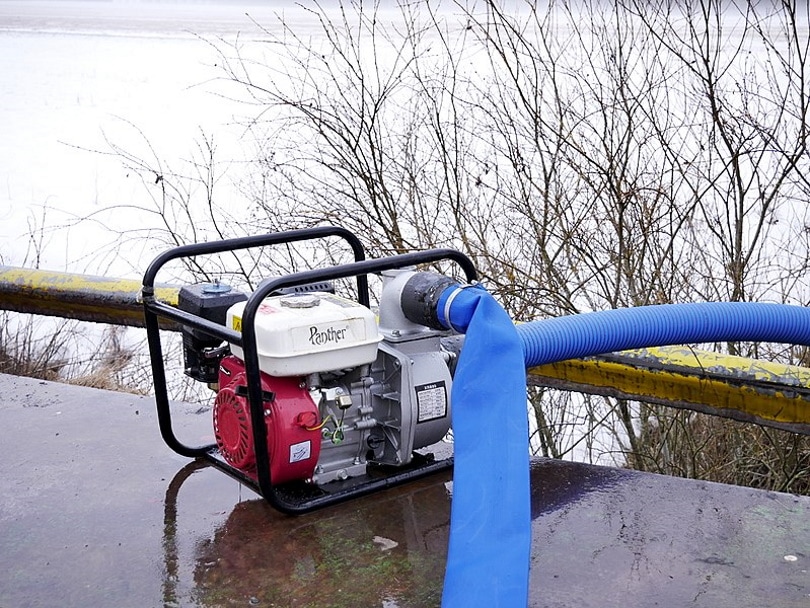
Precipitation and drainage can cause water to collect on top of your concrete form. Extracting that water using pails can result in a loss of productive hours. A simple motorized water pump can do that job at a faster pace without requiring any human input.
15. Power Drills and Hammers

You are more than likely going to need power drills for finishing tasks, such as attaching ledgers and plates to foundations or mounting railings and posts to poured steps. Ensure that a power drill or rotary hammer is contractor-grade before purchasing it.
16. Shovel
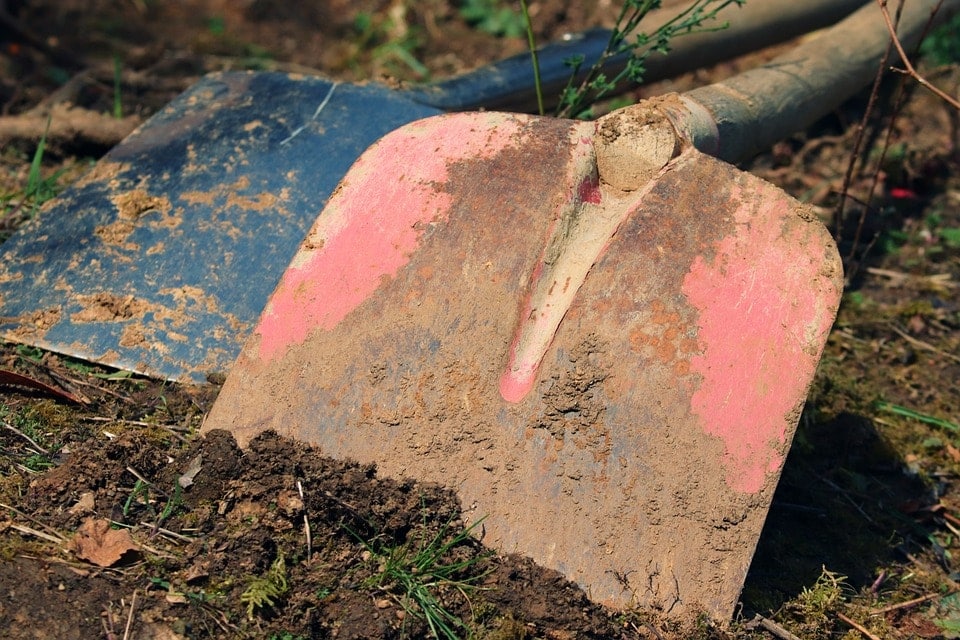
A shovel is handy when moving small amounts of concrete around. Most concrete contractors prefer the square-ended shovel to the rounded, garden-type version.
17. Tape Measure

A tape measure allows you to measure the depth of a concrete form quickly before you pour. It is also helpful for mapping and testing placement.
18. Rakes

A rake provides a quick way of spreading the freshly poured concrete around so that it is uniform. While the standard garden rake can do the job, you would be better off using a come-along rake. A come-along rake has a scooped blade to allow you to pre-level new concrete easily. The blade also features a tine that helps lift the mesh or rebar into position before the concrete hardens.
19. Tamper
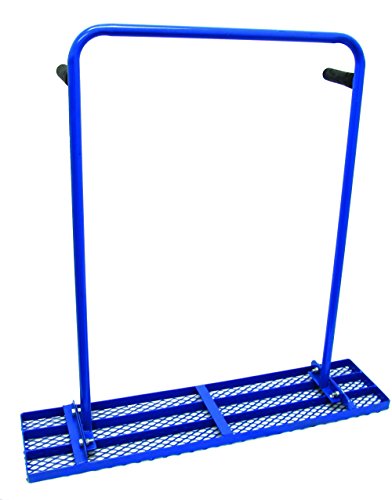
20. Kneeling Boards
Kneeling boards provide a comfortable surface to kneel on when working on a concrete surface using your hands.
21. Trowels
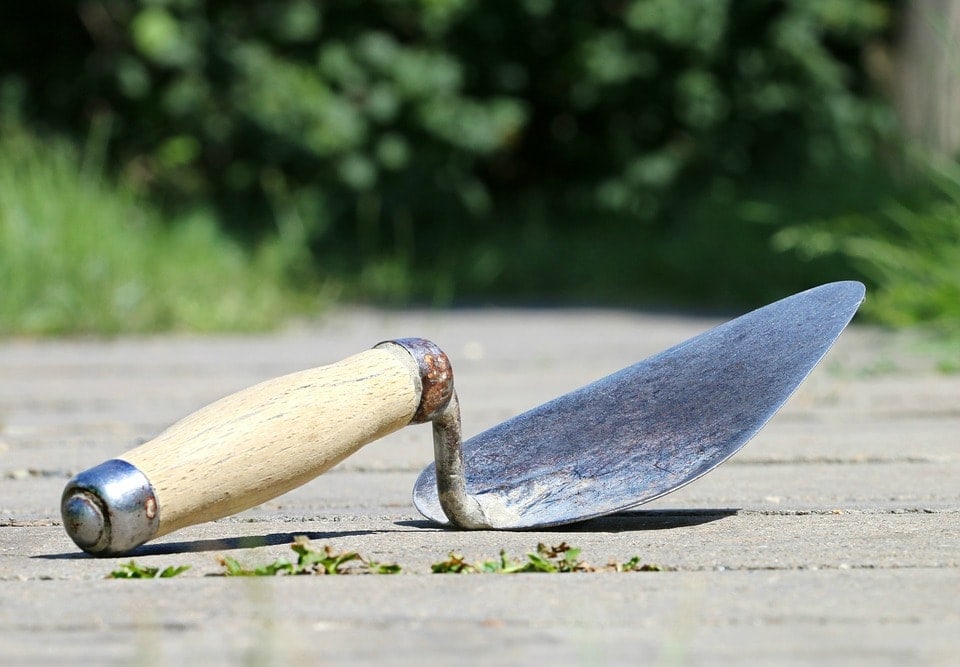
A trowel is a tool that helps you smooth out the concrete surface for its finishing coat before it dries. Hand trowels are used for smaller slabs, while larger slabs typically require power trowels.
22. Sand Screen

This screen is used for sieving sand onsite.
23. Digging Bar

A digging bar is handy to break up or loosen compact or hard surfaces.
24. Measuring Box
A measuring box allows you to measure the amount of materials you will be using in your concrete mix.
25. Putty Knife
The putty knife comes in handy during putty finishing. It allows you to control the thickness of the putty effectively.
26. Vacuum Blower
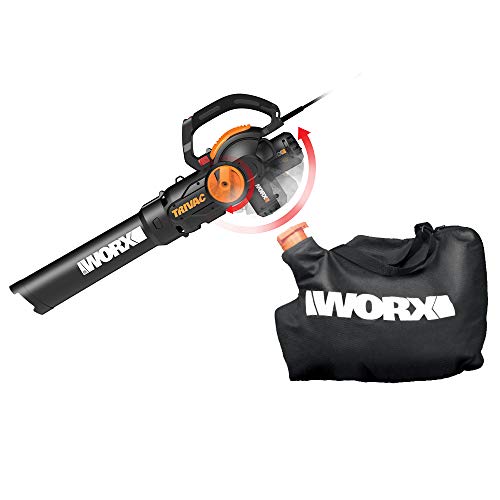
27. Forklift
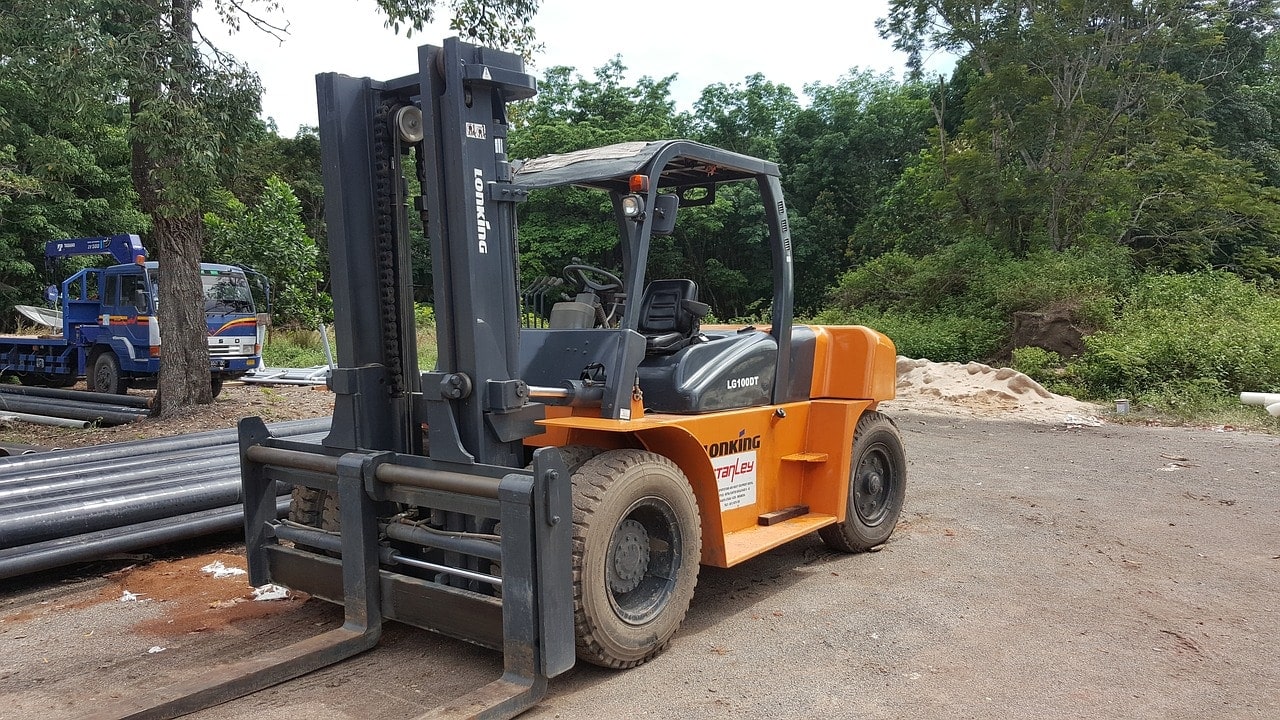
Depending on the size of your project, you might require a forklift for the efficient transportation of materials around the site.
28. Polishers
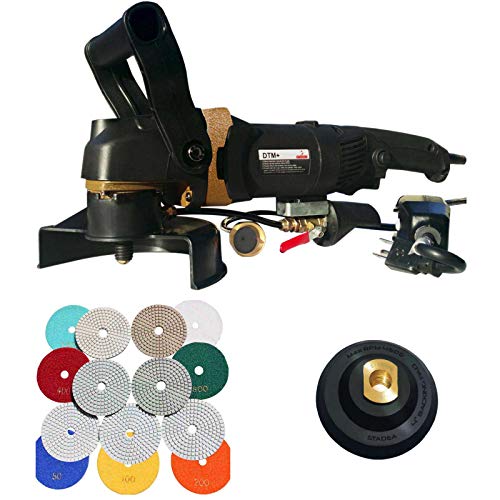
29. Dust Collection Systems
Working with concrete results in a lot of dust. As mentioned, cement dust can be hazardous. Therefore, it is vital to get it out as fast as possible. As such, you should invest in a dust collection system for the health of your workers.
30. Pressure Washer
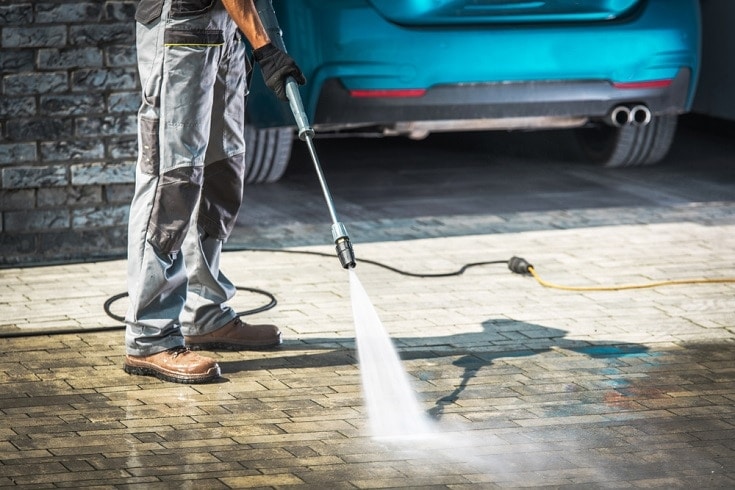
Concrete jobs can be messy. A pressure washer will allow you to clean up fast and effectively.
Conclusion
If you want to work with concrete, having the right tools can make the difference between a great job and a mediocre one. Some tools are inexpensive, but you may have to save up to purchase others like the forklift. While this list is not comprehensive, you now know where to start.
Related Reads:
- How to Safely Dispose of Concrete: What You Need to Know!
- 8 Types of Concrete – Everything You Need to Know!
Contents
